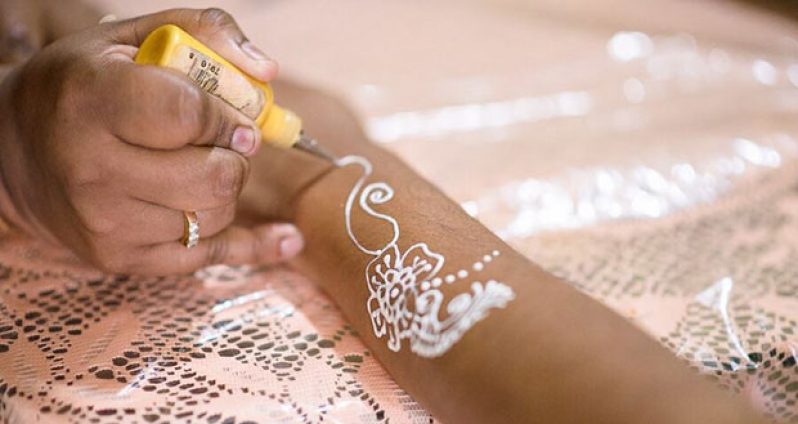OFTEN seen adorning the appendages of Hindu and Muslim brides during traditional wedding ceremonies, henna designs (known as Mehendi or Mehndi in some cultures) have, over the past few years, increased in popularity, and have trickled outside of tradition to become part of a wider list of events in Guyana and around the world. In Guyana, where our culture is richly influenced by Indian practices, henna designs are therefore not uncommon, and the growing demand and popularity of the art has led many makeup artists to adopt this skill, so as to provide their clients with this attractive artistic accessory for various events.

GROWING DEMAND
“Long ago, when you saw a woman with henna, it meant that she had gotten married,” says Satya Khan, makeup artist and owner of Serenity Beauty, which provides makeup and henna design services for all occasions.
“Now, you see bridesmaids, family members and other persons doing it as well.” Occasions would range from weddings to religious and cultural functions, holidays, baby showers, or even just photo shoots, and Satya says that persons of all religions indulge in the practice as well.
“I started doing it when I used to dance,” Satya said. “I would do it for myself and my friends, and they encouraged me to make it a public service, because we saw the demand was growing.”
Now, there is hardly an event that she attends to apply makeup, where henna is not also part of the package. “The beauty is in the intricacy and the clarity in the designs; it really adds something to an overall look for that special event,” she said.

ORIGIN
Derived from henna, a flowering plant which produces the dye used in henna designs, henna designing involves the painting of floral-themed art on to the body, using the dark henna powder in paste form. The completed design is then coated with a sugar-based solution to deepen the colour. And, depending on the intricacy of the design, the process could take from as little as 15 minutes to an hour to complete.
Worldwide, the practice of using henna as body paint is said to be observed among many cultures in countries where the henna plant grows (some believe it originated in Egypt before the plant was taken to India in 700AD).

The ceremonial use of henna for weddings is mostly practised in the Indian sub-continent, and among Indian cultures worldwide.
Henna designs are also used in some parts of Northern Africa, and the Horn of Africa. In Islam, henna is regarded as having Barakah (blessings), and is applied for luck, as well as joy and beauty.




.jpg)









